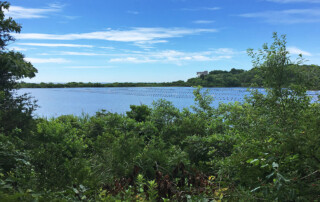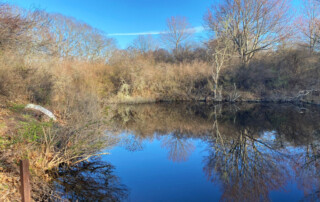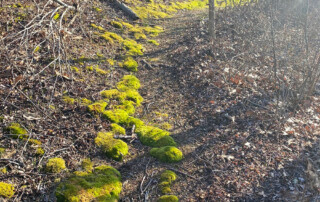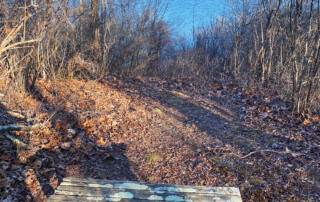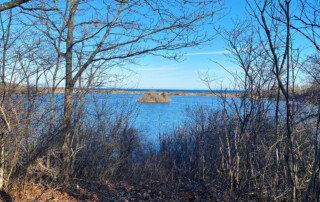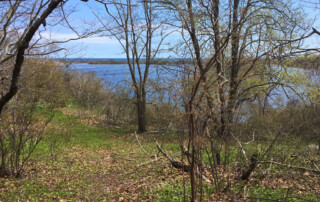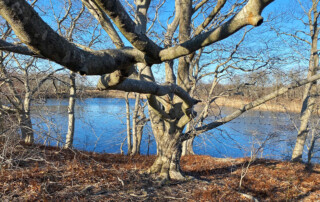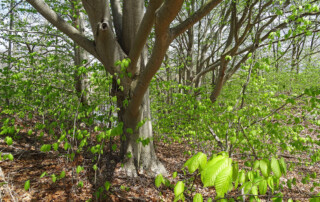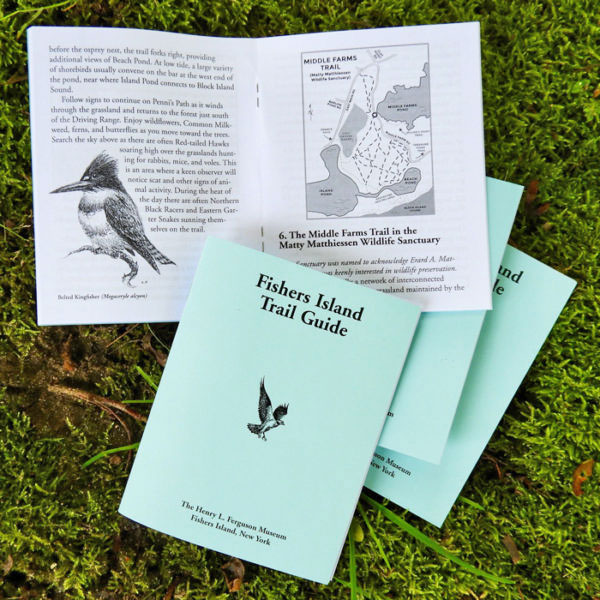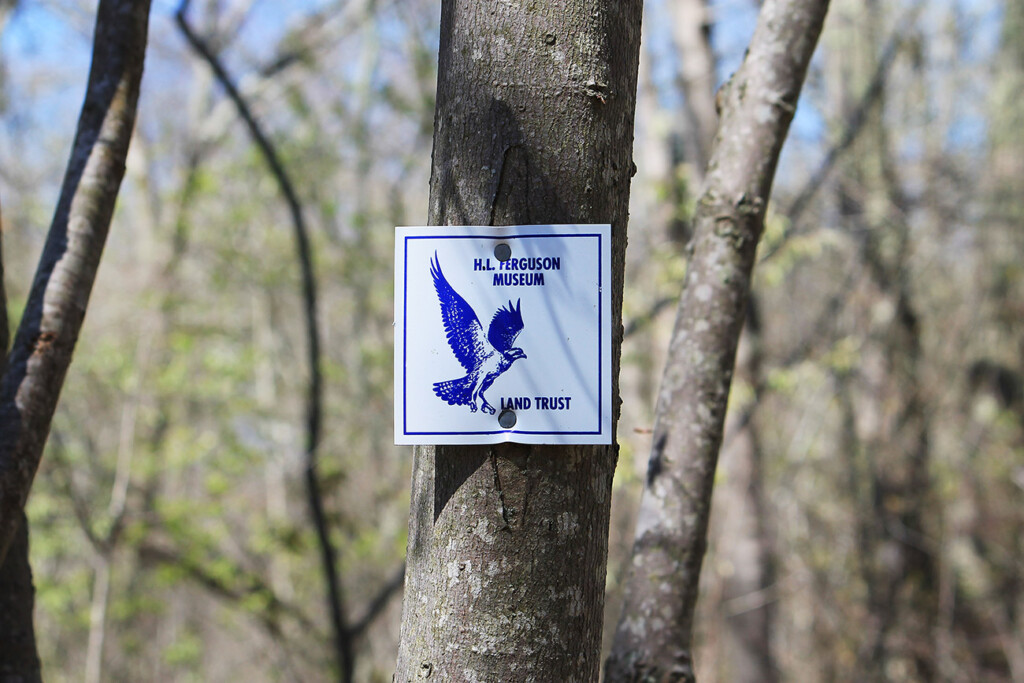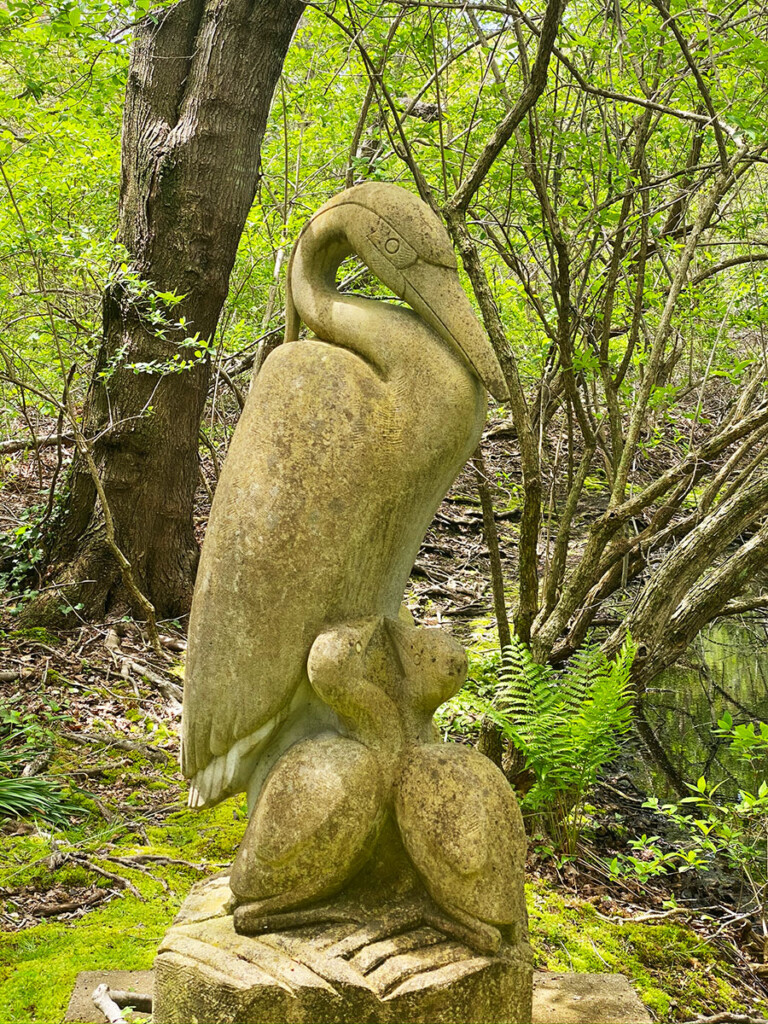
4. Island Pond Trail in Betty Matthiessen Wildlife Sanctuary
The Betty Matthiessen Wildlife Sanctuary was given to the Henry L. Ferguson Museum in memory of Elizabeth C. Matthiessen by her husband, Erard A. Matthiessen, and her son, Peter Matthiessen. This eight-acre peninsula, surrounded by the brackish waters of Island Pond, is unique in the diversity of its wildlife habitats. Parking is available just off the main road adjacent to the trail head.
This loop trail is best traversed in a counter-clockwise direction and is notable for its varied vegetation, which changes in relation to the trail’s elevation and distance from Island Pond. With two fine American Beech groves, excellent views of Island Pond and the ocean beyond, cushion moss-covered segments of trail, and a small freshwater pond in the middle of the Sanctuary, this is one of the most beautiful wildlife areas on Fishers Island. It is particularly attractive during the spring bloom of Shadbush, which dominates the south side of the peninsula. Shadbush, also known as Juneberry, is a member of the Rose family and produces an early summer (June) edible fruit that is prized by birds and other animals. This Sanctuary attracts a variety of birds, including Yellow Warbler, Common Yellowthroat, Eastern Towhee, Gray Catbird, Fish Crow, Green Heron and the Mallard, many of these nest on the peninsula. The interior freshwater pond supports a large population of Green Frogs and their tadpoles and a diverse group of dragonflies. This is another area where River Otter scat is often seen.
At several locations along the trail, it is possible to observe marine life in Island Pond and the workings of the oyster farm. Careful viewing with a pair of binoculars will reveal the remains of an old pump on the barrier beach to the south; it was used to restore Island Pond to its role as a freshwater reservoir after the 1938 hurricane storm surge breached the barrier beach, adding saltwater to the pond. The brackish water now sustains Eastern Oysters, clams, snails, and a variety of small fish, as well as stands of Eelgrass and Widgeon Grass. Along the trails you’ll see Eastern Bracken and Hay-scented ferns, while at the edge of the Sanctuary’s freshwater pond there are Marsh Ferns and Sensitive Ferns. An interesting resident of the preserve is the Beech-drop, an obligate parasitic plant without chlorophyll that can be seen in the eastern-most beech grove on the shoreline. Look for a brown, spindly plant that grows 10-inches high in clumps. A variety of shrubs and vines border the trail as well, including Bush Honeysuckle (non-native invasive), Highbush Blueberry, Bayberry, Sweet Pepperbush, Roundleaf Greenbrier, and Poison Ivy. This trail is a great one for observing a fascinating variety of flora, fauna, and ecosystems.


